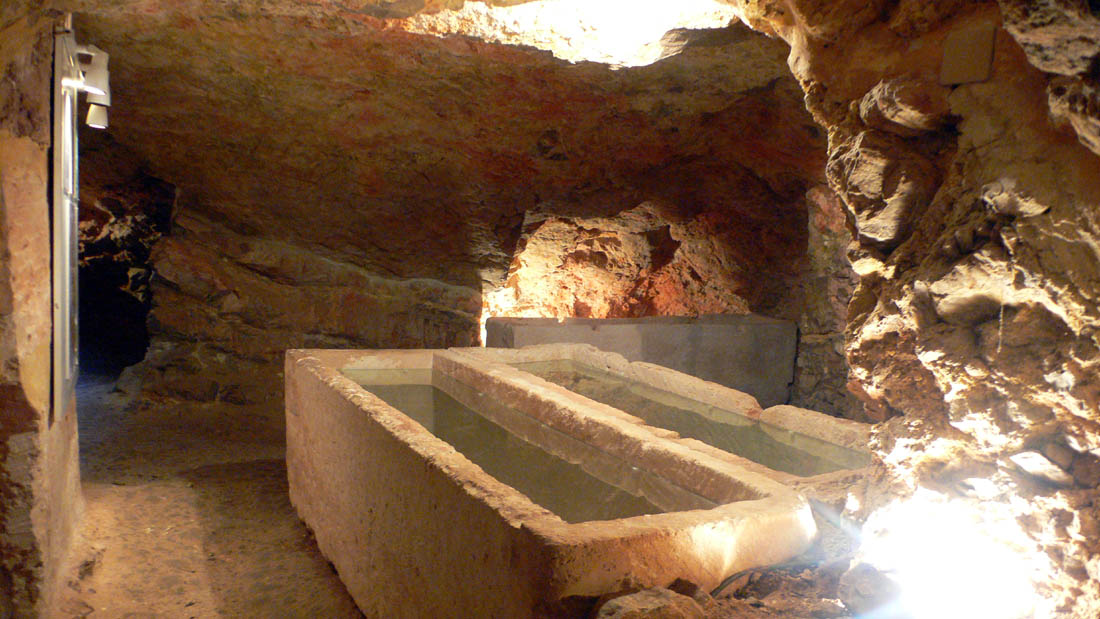A story of genetic replacement on the island of Ibiza
A story of genetic replacement on the island of Ibiza
Ancient DNA from Ibiza demonstrate a clear genetic discontinuity between the early Phoenician settlers and the modern inhabitants of the island according to a study published the 4th December and led by E. Matisoo-Smith from the University of Otago, New Zealand, P. Zalloua of the Lebanese American University, Beirut, and with the collaboration of researchers from the Institute of Evolutionary Biology (Universitat Pompeu Fabra-CSIC), Barcelona, and the Archaelogical Museum of Ibiza. Study investigators analysed DNA from archaeological remains and from modern inhabitants of Ibiza.
 Arriving from Cadiz, the Phoenicians first settled on the strategic island of Ibiza around 654 BCE. By controlling the Bay of Ibiza they dominated maritime movement in all the North-western Mediterranean and controlled access to the Atlantic Ocean. For several centuries, the Phoenicians dominated metal trade from the Atlantic to the Eastern Mediterranean. The Phoenicians, later referred to as Punics (in relation to the Carthaginian Punic wars with the Romans), remained the main inhabitants of Ibiza for about seven centuries. Burial rituals and other archaeological findings at the Puig des Molins necropolis of Ibiza provide evidence for a second population flow from Carthage and other Punic settlements in the Mediterranean coinciding with a period of prosperity and major development of the island around 5th BCE. After the 2nd Punic War, Ibiza started a long process of integration in the Roman Empire, which culminated in 74 AD, when it became a Latin Municipium. The Roman impact on the local inhabitants of Ibiza appears to have been minimal as is indicated by limited evidence of influence in the archaeological record. The Ibizan population remained somewhat isolated until the Islamic conquest of the island around 900 CE and they remained under Muslim rule for more than 300 years. Beginning around 1200 CE Ibiza was the recipient of from Catalonians and mainland Spaniards as its population grew.
Arriving from Cadiz, the Phoenicians first settled on the strategic island of Ibiza around 654 BCE. By controlling the Bay of Ibiza they dominated maritime movement in all the North-western Mediterranean and controlled access to the Atlantic Ocean. For several centuries, the Phoenicians dominated metal trade from the Atlantic to the Eastern Mediterranean. The Phoenicians, later referred to as Punics (in relation to the Carthaginian Punic wars with the Romans), remained the main inhabitants of Ibiza for about seven centuries. Burial rituals and other archaeological findings at the Puig des Molins necropolis of Ibiza provide evidence for a second population flow from Carthage and other Punic settlements in the Mediterranean coinciding with a period of prosperity and major development of the island around 5th BCE. After the 2nd Punic War, Ibiza started a long process of integration in the Roman Empire, which culminated in 74 AD, when it became a Latin Municipium. The Roman impact on the local inhabitants of Ibiza appears to have been minimal as is indicated by limited evidence of influence in the archaeological record. The Ibizan population remained somewhat isolated until the Islamic conquest of the island around 900 CE and they remained under Muslim rule for more than 300 years. Beginning around 1200 CE Ibiza was the recipient of from Catalonians and mainland Spaniards as its population grew.
“We expected a complex pattern of settlement of the island of Ibiza, but we never expected to witness genetic replacement. Replacing an entire population is not something we have seen much of throughout history” (PZ) . Based on the mtDNA results, the study results showed clear genetic discontinuity between the early Phoenician settlers and the modern inhabitants of the island.
Thus, the unusual genetic signature of modern Ibizans is not likely to be the result of their Phoenician ancestry, at least from a mitochondrial perspective. Multiple population arrivals through invasions or other movements combined with periods of population instability since the early Phoenician settlement may have led to a total reshuffling of the genetic makeup of this island. “It is fascinating to see that the ancient lineages were replaced by European ones most closely related to those of modern French, maybe a Catalonian connection”. Despite the lack of continuity observed in the mitochondrial genomes, previous Y chromosome analyses suggest that there is still some Phoenician signature in the modern Ibizan population. The whole genome data obtained from one ancient Ibizan sample belonged to an individual with a significant Eastern Mediterranean component, indicating an admixed Phoenician community in Ibiza during the 3rd century BCE. While this result is consistent with the archaeological evidence and further indicates that diversity was a hallmark of Phoenician societies, our results are consistent with historical evidence suggesting that Phoenician influence in the West was male dominated and indicates that there was not a total replacement of the Ibizan founding population.
Reference article: Pierre Zalloua, et. al.; Ancient DNA of Phoenician remains indicates discontinuity in the settlement history of Ibiza; Scientific Reports; volume 8, Article number: 17567 (December 2018) | DOI: https://doi.org/10.1038/s41598-018-35667-y
